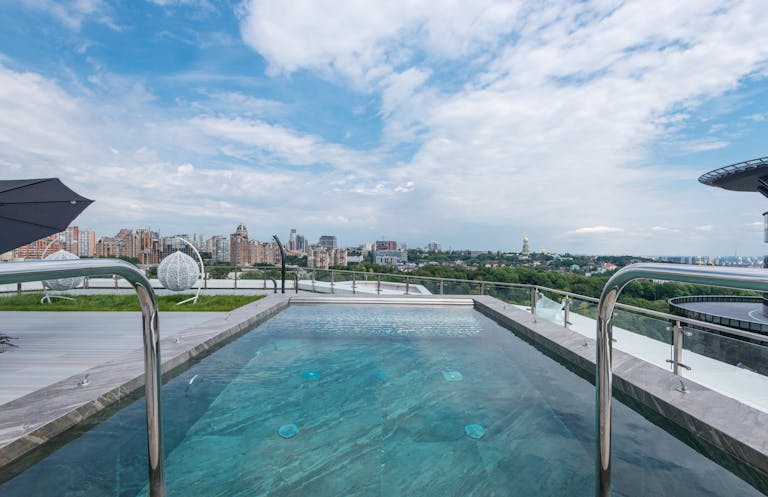Real estate investing is often seen as a domain for the highly experienced or those with deep pockets, but valuable lessons can be drawn from unexpected sources. This article delves into the inspiring journey of a housekeeper-turned-successful rental investor—the mother of a MoveZen staff member. Her story is not just about the transformation from a primary residence to a profitable rental property but also about strategic updates, disciplined financial management, and maintaining high resident satisfaction.
Starting Small and Smart
Our story begins with a simple but transformative decision: a housekeeper decides to rent out her primary residence instead of selling it. Often overlooked by many as a means to enter the real estate market, this move underscores the power of leveraging existing assets. The choice to become a landlord was facilitated by a series of strategic updates to the property that enhanced its appeal and functionality without incurring massive costs.
Strategic Property Updates
The updates were practical and simple:
Trade-Offs Had to be Made
We chose to hold off on a fence. At the time the cost was substantial for someone just starting out. A lot of owners do that and it certainly made sense to start. During a scorching housing market it also made sense to keep recycling her income to buy more rental homes. So that’s what she did. However now that interest rates are high, and buying more rentals is on hold for her, we plan to add a fence to this home as soon as the 3-year + resident moves. (see Why Satisfied Renters Are a Goldmine in Modern Rental Investing)
Installing a Fence on a Rental Property is Almost Always an Amazing Investment
It’s surprisingly rare for an owner to add a fence to a rental. Most fenced homes come to the market because the owner put it in while living there or as a builder add-on. The cost is substantial but that shouldn’t be a major factor in considering this project if you are making other investments. Hurricanes need to be considered but still probably don’t change that (hurricane risk can still be mitigated with techniques such as airflow gaps).
Low Risk, High Reward
They typically come with almost no risk, last decades (and pay off for decades), and return your entire investment within 5 years for most homes. Often as little as 3 years which is hard to find. These days without leverage those kinds of risk-free returns are almost unheard of.
As Inflation Rises, Often the Best Investment is Real Estate You Already Own
These enhancements were critical in transforming the property into one that could command a higher rent. These simple improvements for a simple home led to a gross potential rent almost double her monthly mortgage payment.

The final touch to maximize this homes rental value is a privacy fence. Our next set of photos will be improved dramatically (lights always on). We’ve only had 4 residents in 10 years so they aren’t updated as often as most.
Financial Discipline and the Path to Expansion
She set a solid foundation for this fruitful investment journey before the home was purchased. After years of saving, she put 20% down and ended up with a payment that was barely over $600 a month. The first lease we ever had was for $1200 a month and generated significant positive cash flow right from the first lease. This positive cash flow was the catalyst that allowed for further growth and expansion in the real estate portfolio.
Growth Through Reinvestment
The profits generated from the rental were judiciously reinvested into acquiring additional properties, expanding her portfolio to three rental homes and a buildable lot. While the acquisition of a lot was contrary to typical cash flow-focused advice, it represents a strategic diversification of assets, demonstrating a balance between immediate cash flow and long-term property appreciation potential.
Tax Benefits and Sustainable Wealth Creation
One of the most compelling aspects of her journey is the double benefit experienced during tax season. After her first full year of filing taxes as a landlord, she reported higher income than ever before but paid less tax, showcasing one of the key advantages of real estate investing—tax efficiency. Rental property ownership offers various deductions and depreciation benefits, which can significantly lower tax liabilities while boosting income.
Navigating Challenges with a Focus on Resident Satisfaction
Inflation, economic strain on renters, and rising fraud levels have posed new challenges to landlords across the industry recently. Despite these hurdles, prioritizing resident satisfaction and accepting below-market rents has proven beneficial. This approach has fostered long-term tenancies and minimized tenant turnover. Two of the most critical factors for maintaining a steady rental income and reducing operational stress.
The Benefits of Long-Term Tenant Retention
By focusing on exceptional care for proven high-quality residents and accepting slightly lower rents, she has been able to enjoy low stress, reduced tax burdens, and sustainable profitability. This strategy emphasizes the importance of quality over quantity and demonstrates that a focus on tenant satisfaction can lead to substantial long-term benefits.
Case Study:
At the time of this writing, one of these 3 homes has been occupied since the moment it was first built. Which is going on 2 years now. It was a very high price at the time of move-in and is now about market rate. One has been occupied for just under 4 years and is a couple hundred below market rate or $200 X 12 = $2400. That is about half of the average turnover for landlords who’ve had tenants in place for 4 years. It was at market rent for two of those years and the largest maintenance cost in that time has been patching the roof after Hurricane Florence. The third house had a resident in place for the first 4 years but has since had a turnover about every 2 years. It’s currently occupied by a resident who just finished their second year.
Since 2020 these 3 homes have experienced a combined vacancy of about 2.5 months. To demonstrate the benefits of focusing on keeping happy residents in place as long as possible, at the end of November 2024 we compared the cash flow statement for these 3 properties to another owner famous for digging in on unrealistic rates. The comparison would probably be eye-opening for most rental investors. The housekeeper had an income of $65k on 3 entry-level homes in a smaller city, while the owner focused on rental rates had just $20K more on 6 similar homes in a major city.
Vacancy and Turnover Decimate Net Income Over the Long Run
The homes with frequent turnover due to pursuing a rate-focused strategy also had 100% more repair cost. This led to a net difference between a 3-home portfolio and a 6-home portfolio of about $15k. DO NOT focus on rate or you will pay the price. This comparison was only for 2024 but we just outlined that these homes have been occupied almost non-stop from the beginning of service. Over time these three homes will crush the performance of the 6 home portfolio. Sometimes it’s shocking in our industry how much money landlords can lose and never realize the mistakes they have made. If you’re doing it right with a decent investment and not having terrible luck you should be making a ton of money. That’s the power of a resident satisfaction profit model.
Key Takeaways for Rental Investors
Conclusion
The journey of a housekeeper to a successful rental property investor encapsulates the essence of smart, strategic real estate investing. It highlights how anyone, regardless of their starting point, can build a profitable and sustainable rental property portfolio. By focusing on strategic property updates, disciplined financial management, and a resident-centric approach, rental investors can navigate the complexities of the market and achieve long-term success and wealth creation.












